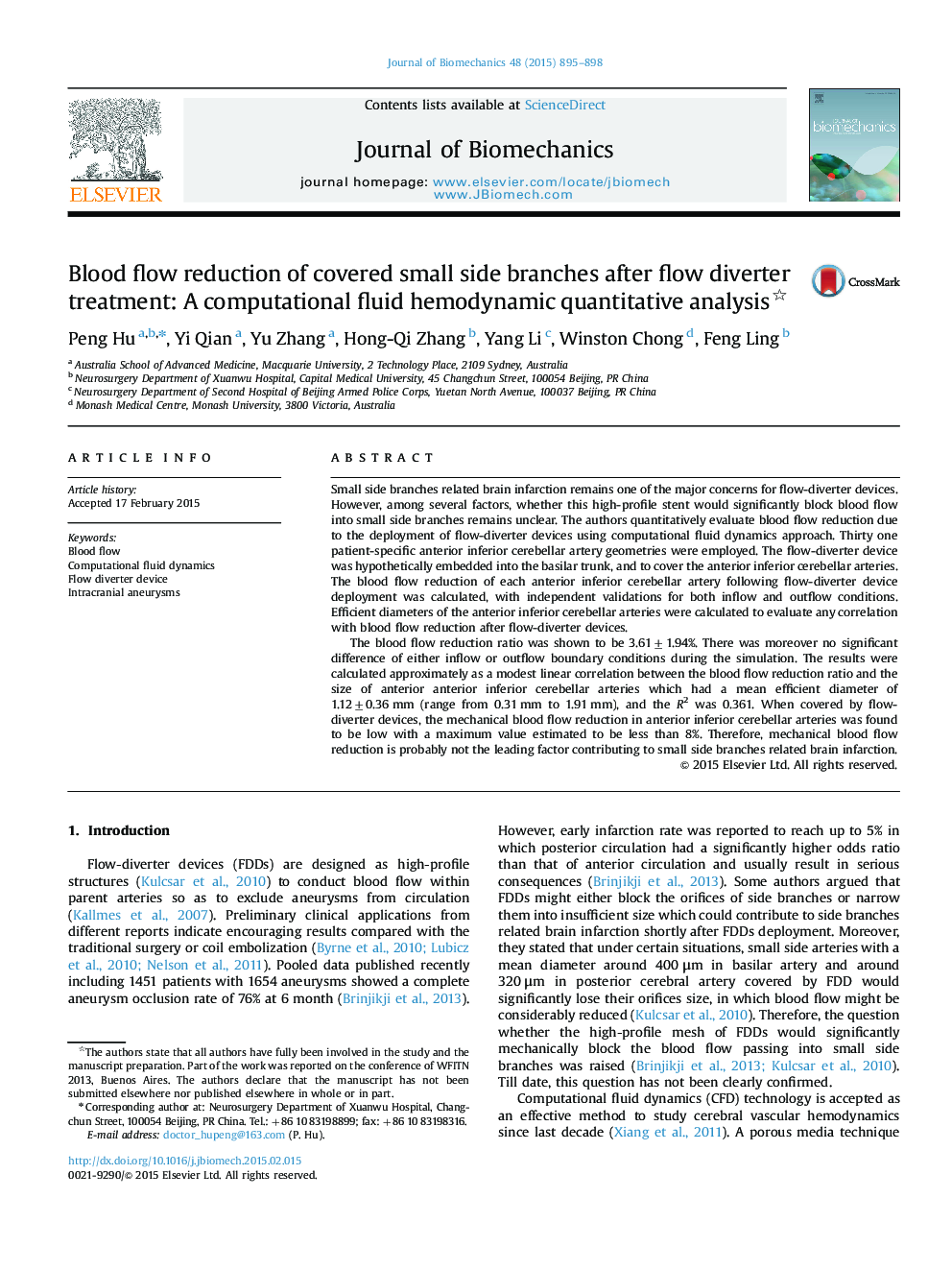| Article ID | Journal | Published Year | Pages | File Type |
|---|---|---|---|---|
| 871969 | Journal of Biomechanics | 2015 | 4 Pages |
Small side branches related brain infarction remains one of the major concerns for flow-diverter devices. However, among several factors, whether this high-profile stent would significantly block blood flow into small side branches remains unclear. The authors quantitatively evaluate blood flow reduction due to the deployment of flow-diverter devices using computational fluid dynamics approach. Thirty one patient-specific anterior inferior cerebellar artery geometries were employed. The flow-diverter device was hypothetically embedded into the basilar trunk, and to cover the anterior inferior cerebellar arteries. The blood flow reduction of each anterior inferior cerebellar artery following flow-diverter device deployment was calculated, with independent validations for both inflow and outflow conditions. Efficient diameters of the anterior inferior cerebellar arteries were calculated to evaluate any correlation with blood flow reduction after flow-diverter devices.The blood flow reduction ratio was shown to be 3.61±1.94%. There was moreover no significant difference of either inflow or outflow boundary conditions during the simulation. The results were calculated approximately as a modest linear correlation between the blood flow reduction ratio and the size of anterior anterior inferior cerebellar arteries which had a mean efficient diameter of 1.12±0.36 mm (range from 0.31 mm to 1.91 mm), and the R2 was 0.361. When covered by flow-diverter devices, the mechanical blood flow reduction in anterior inferior cerebellar arteries was found to be low with a maximum value estimated to be less than 8%. Therefore, mechanical blood flow reduction is probably not the leading factor contributing to small side branches related brain infarction.
